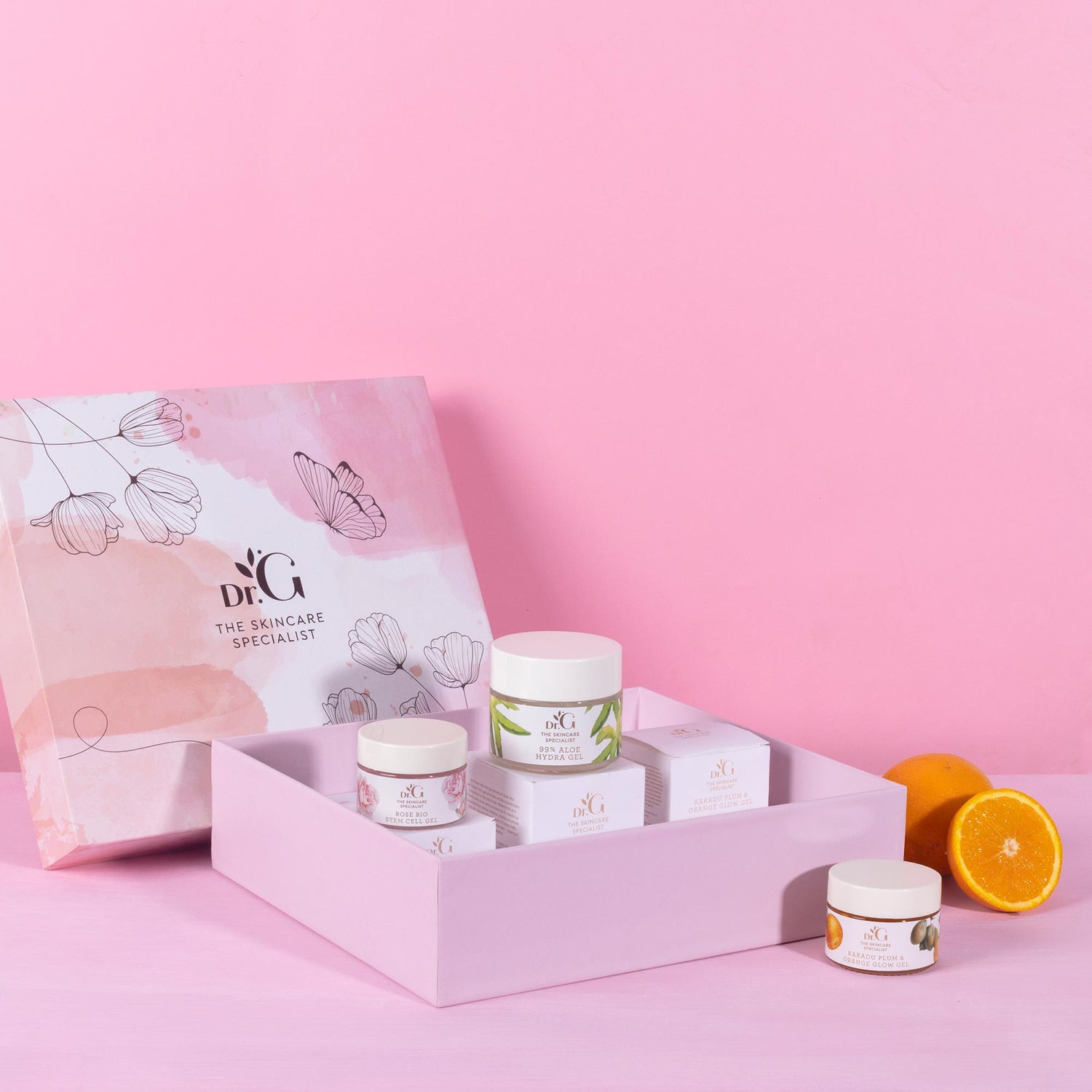Internet is undoubtedly flooded with information on skincare & powerful ingredients like Vitamin C, hyaluronic acid, retinol, niacinamide which plays a vital role in putting a radiant skin forward but little are we familiar with how these powerful ingredient can deliver maximum benefits if they are being mixed with other ingredients.
Vitamin C + Ferulic Acid:
Vitamin C is considered to be one of the most powerful antioxidants that protects our skin from environmental factors like Uv rays, dirt & pollution, and free radicals. It also helps in boosting collagen production & reduces visible signs of aging along with an even & radiant skin tone. However, the most potent form of Vitamin C is vulnerable to light, heat & air. So, vitamin C can be mixed with Ferulic Acid as it will help to stabilize vitamin C while also increasing its photoprotection.
Vitamin E & Vitamin C:
Vitamin C and Vitamin E are often together addressed as Skin Nirvana. The vitamin E is no slouch as a skin care ingredient itself as, but when paired with vitamin C it is more effective in preventing photodamage than either vitamin alone. Both work by negating free radical damage, but each combats different types of UV. By adding vitamin C and E serums into your routine, or using products that contain both, you’re giving your skin double the antioxidant ammunition to fight damage from free radicals and more UV damage than vitamin C by itself.
Hyaluronic acid & Vitamin C:
Hyaluronic acid and vitamin C are two that become even stronger when paired with one another. These ingredients can provide both immediate and lasting results when used together in anti-aging formulations.
Retinoids & Peptides:
It is a great idea to use both a retinoid- and peptide-based night cream at bedtime. You get the collagen-building effects of the retinoid, but it also works to improve the penetration of the peptide cream, which can help improve skin’s firmness. Peptide creams contain plenty of emollients, hydrating ingredients that can help counteract the irritating side effects that often come with using a retinoid.
Retinoids + Hyaluronic Acid:
Pairing a retinoid with a hydrating hyaluronic acid-based moisturizer is another good combination. Retinoids are great because they can help tighten pores, decrease oil production, and get rid of dead skin. However, all of this can make the skin dry and flaky, she explains. That’s where hyaluronic acid comes in, a choice moisturizing ingredient that can ward off that unwanted dryness.
It is an art to layer the skin care product keeping the science behind in mind. While we are familiar with the basics of how to layer skincare products which is cleansing, toning, application of serums, moisturising & sunscreen during day & cleansing, toning, anti-aging serums, under eye cream during night, little are we familiar that ingredient of the product also plays a critical role in layering of the skin care products or ingredients. Also, you must apply in order of thickness, starting with the thinnest and working your way up. For eg- If using a harsh cleanser or mask, be careful with any follow up products. This might be a good time to skip the retinoid or even layering vitamin C serums as it can be irritating to some skin types.
Skincare Ingredients that should not be mixed together are:
- Retinoids + AHA/BHA - It damages skin moisture barrier and can cause irritation, redness, dry skin over time; use separately and sparingly.
- Retinoids + vitamin - It may cause over exfoliation, resulting in increased skin and sun sensitivity; separate into day/night routines.
- Benzoyl peroxide + vitamin C- The combination renders the effects of both useless as benzoyl peroxide will oxidize vitamin C; use on alternative day.
- Benzoyl peroxide + retinol - Mixing the two ingredients deactivates each other.
- Multiple acids (glycolic + salicylic, glycolic + lactic, etc.)- Too many acids can strip the skin and damage its ability to recover.




